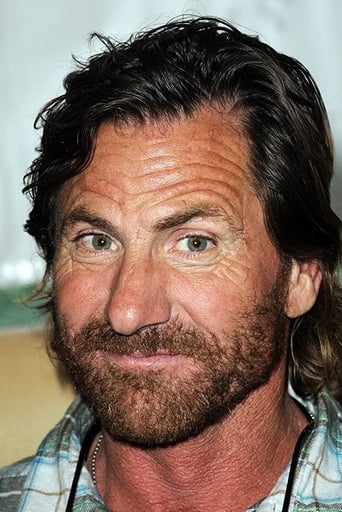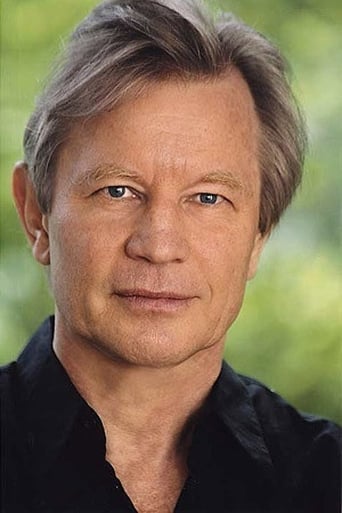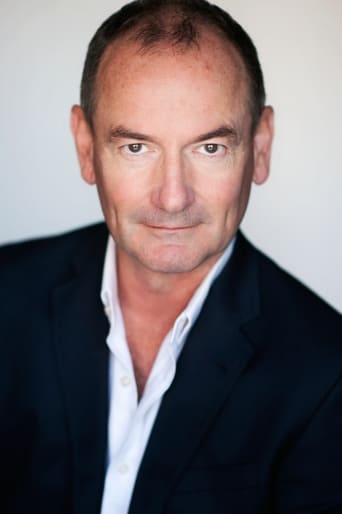pawebster
This TV production has a good story to tell, and a good cast to tell it. It is packed with talented actors. Adrian Rawlins is excellent as Chris Chataway and looks quite like him, too. Robert Burbage (Whatever happened to this actor?) is also good as Chris Brasher. Nique Needles practically steals the film as Landy. I'm very unsure about Richard Huw. There are two problems. One is that he does not seem like an athlete (unlike Landy and Santee) and the other is that, as so often in his roles, he appears simply too glum for much of the time. (See the 2005 version, Four Minutes, for a much happier portrayal of Roger Bannister).The film is very handicapped by its low-budget approach to the topic of running and running tracks. In places it resorts to closeups and poor-quality newsreel footage to get round its limitations as best it can.One extreme example of this cheapness is when Landy stands admiring the running track in Helsinki - supposedly much better than those in Australia. Does the camera show this great track? Forget it. All we see is a shot of the ground at Landy's feet.It is a big shame that the makers could not even properly reconstruct what should have been the key event of the film: Bannister's four-minute mile. Note the scene in the changing room with Bannister, Chataway and Brasher. While Roger is complaining that it's too blowy, we never see any sign at all of windy weather. Then they look out of the window and we see the flag on the tower of Iffley church hanging limply, whereupon they declare that the wind has dropped. But we never saw the flag do anything else but hang limply! The film-makers, incredibly, put far more effort into filming Landy becoming the SECOND man to run the four-minute mile a few weeks after Bannister's achievement. For that they engaged a large number of extras to populate the grandstand and showed practically the whole race.The scriptwriter was an Australian...Despite the cheapness when it comes to the actual running alluded to in the title of the film, a lot of money seems to have been wasted showing us a platform and train at Paddington Station in the fifties and a period airliner painted with the words Finnish Airlines. There is also some bad dialogue - the corny type in which characters lecture each other with information they undoubtedly already know, for the benefit of the viewers.However, despite its serious faults, it is well worth seeing - as is the newer version "Four Minutes".
johnjredington
Beginning with the race to find Dr. Livingstone and ending with the first man on the moon, the century from 1870 to 1970 was obsessed by milestones in individual achievement. Advances in technology and scientific knowledge allowed mankind to attempt feats previously thought impossible and the advent of speedy and reliable transport opened up new worlds to the general population.Competing against each other in an emerging market for mass communication, the popular newspapers recorded these phenomena and stoked up interest in their own country's successes in order prove their imperialist superiority.The era peaked between 1948 and 1960. This was also the height of the Cold War when international affairs were dominated by the nuclear stalemate between the opposing blocs and was just after the Second World War when secondary powers like Britain and France also believed that they were serious players on the world stage. However, as most countries had had enough recent experience of blasting each other to bits, jingoism had to find another outlet and the press and the new medium of television obliged by coming up with their headline heroes.One by one, the barriers fell. Yeager broke the sound barrier, Hillery and Tenzing conquered Everest just in time for the coronation, Gagarin flew into orbit, Roger Maris slugged his 60 homers and Brazil, inspired by 17 year old Pelé, assembled the most awesome soccer team ever for the 1958 World Cup. The longer it took to reach the milestone, the greater the mystique and, when all around was crashing down, the stubborn resistances of the four-minute mile became an object of fascination, first of all to athletes and coaches, and then to the media moguls and the general public.If there ever was an opportunity to rewrite history, this surely was one. Mile running had reached a new level during the war when, in neutral Sweden, Gunder Haag and Arne Andersen had sliced the record six or seven times between them. But, when Haag departed the scene amid allegations of professionalism after hitting 4 minutes 1.4 seconds in 1945, his mark stood for another eight years.This is the period in which The Four Minute Mile is set. Not only was there an easily-understood summit to be reached but repeated failure to do so had fostered a belief that man had finally found the limit to his abilities. And this was also a time when track and field was governed by the original Olympic ethos of strictly amateur participation and dominated, particularly in middle-distance running, by gentlemen athletes. The film does capture these themes effectively, showing the difference between the Old World Corinthian ideals of Roger Bannister, New World interlopers John Landy and Wes Santee and Denis Johansson's Scandinavian passion for the sport. Hovering in the background are the coaches, the eccentric Percy Cerruti and the scientifically rigorous Fritz Stämpfl, as well as the news-hounds and the blazered toffs of the governing bodies.Period is also faithfully represented through the shoestring facilities which would amaze modern athletes (e.g. the barrack-room accommodation at the Empire Games in Vancouver or Bannister's difficulties in getting a track to race on in London). And even though budget probably prevented the a more comprehensive recreation of events like the 1952 Olympic Games, the use of television, newsreel and radio commentary is effective.The acting and scripting, however, is patchy. Richard Huw's portrayal of Bannister is superb, and the mixture of drive, Oxford University elitism, English understatement, shy awkwardness, private torment on the road to perfection, unquestioning belief in British superiority and guilt at any infraction of his sense of "fair play" resurrects a type of character that once dominated sport but has been extinct for over a generation. If you want to understand what the mindset of those public officials imbued with a sense of duty who ran many Western European countries during the first half of the 20th century, you could do worse than study this performance.However, apart from Michael York's capture of Stämpfl's polite pre-war Viennese geniality, the other characters fail to make a strong enough impression of their own. Sure, some like Adrian Rawlins as Chris Chataway and Robert Burbage as Chris Brasher who, as Bannister's pace –setters, are foils anyway but the real conflicts of the story could have been better developed by more forceful roles for Landy (Nique Needles) and Santee (John Philbin).Overall, an excellent sense of time, place and circumstances and, had the supporting roles increased the depth of the plot, it could have been one of the greatest sporting movies ever.
tmp
This movie is carried on its subject matter. It follows the attempts of a number of athletes, mainly John Landy and Roger Bannister, to break the elusive four minute mile barrier. To run the mile in under four minutes.There are few sporting goals left today that are aspired to as much as this was. Interesting movie if only for documentary's sake




